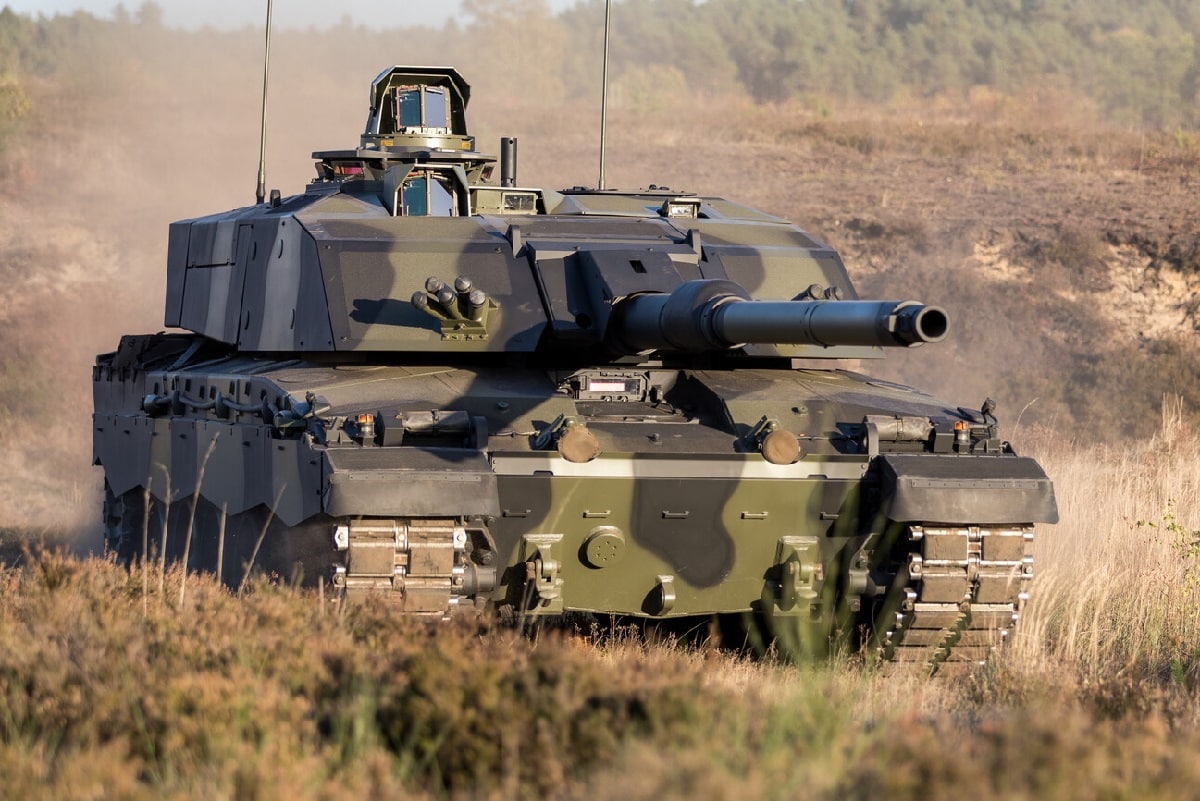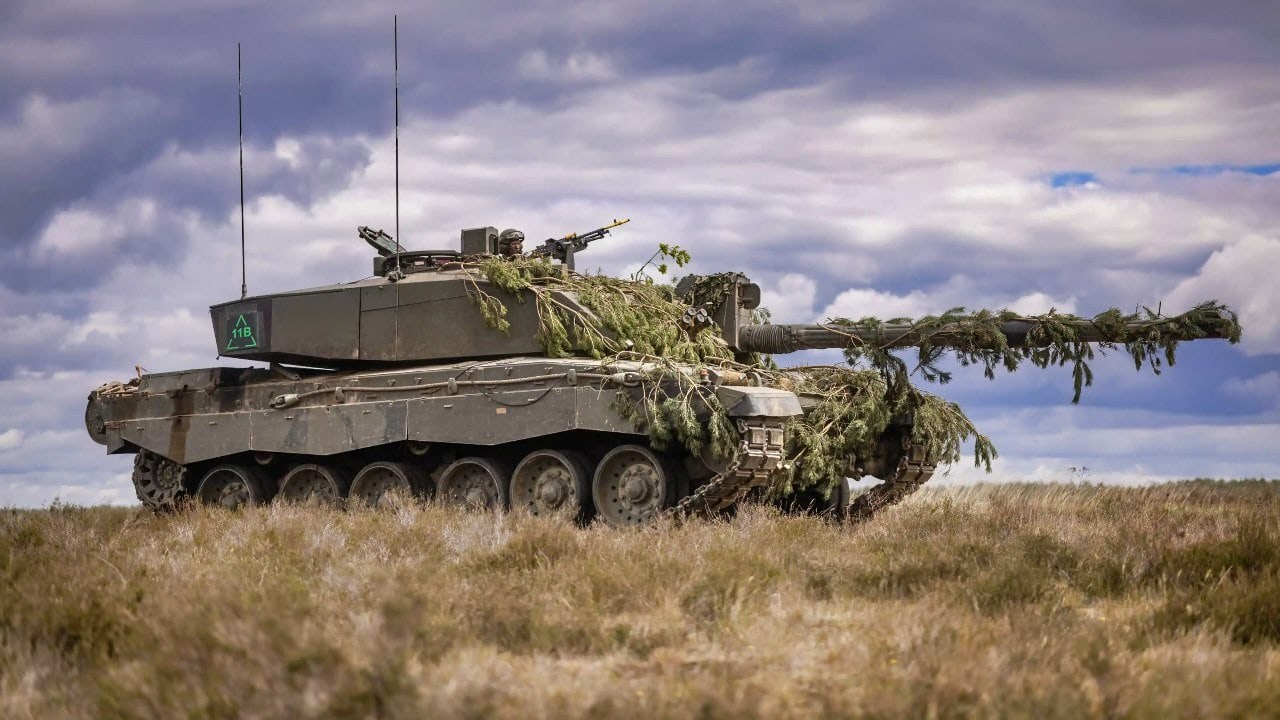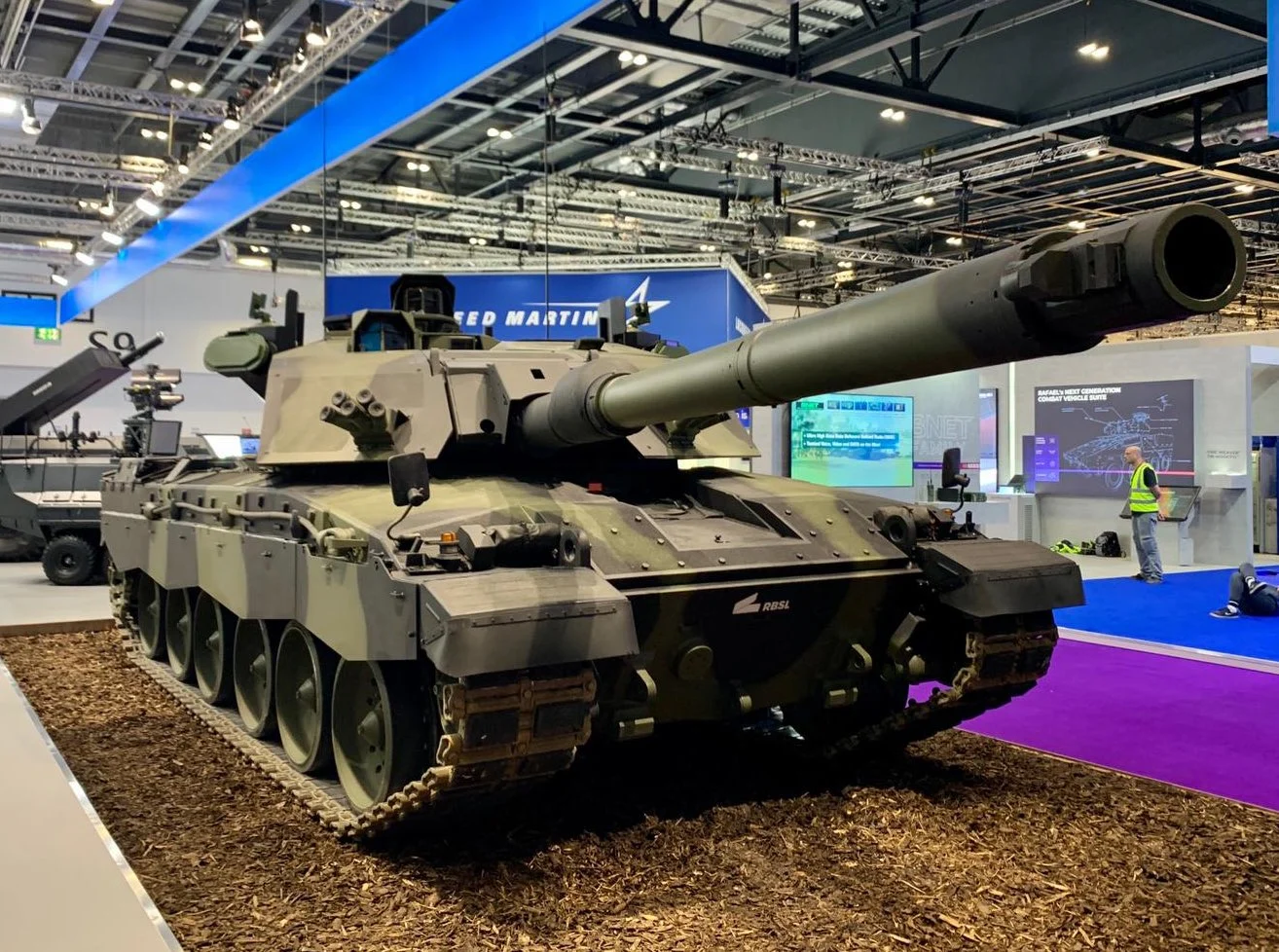Key Points: The United Kingdom is upgrading its aging Challenger 2 main battle tanks to the significantly improved Challenger 3 standard, aiming to enhance combat effectiveness until 2040.
-Key improvements include a new turret housing the NATO-standard Rheinmetall 120mm smoothbore gun (replacing the non-standard rifled gun), advanced thermal sights for commander and gunner, enhanced armor, a laser warning system, and upgraded suspension and engine cooling.

Challenger 3 Image Credit: BAE Systems.
-While these upgrades boost firepower, survivability, and crucial NATO interoperability, the program will only modernize 148 tanks, fewer than the full fleet, raising questions about the overall size of the UK’s future tank force.
Meet the Challenger 3 Tank
We sometimes criticize the British military for instigating budget cuts that have hollowed out the expeditionary force. The Royal Navy surface fleet is not what it once was, and the Royal Air Force has seen better days. However, there is one interesting development the British have emphasized, and this piece of military hardware has shown that the United Kingdom is still dedicated to producing one of the most advanced tanks in the world.
I am referring to the fourth-generation Challenger 3 main battle tank (MBT), which is chock full of modern features and 21st-century attributes that make it so hard to kill on the battlefield. The preceding Challenger 2 MBT had suffered from a lack of attention.
Placed in service in 1998, the Challenger 2 needed some tender loving care and upgrades to keep up with newer tank models from armed forces around the world.
Could the Challenger 2 Be Upgraded?
The British even considered using an entirely different tank to replace the Challenger 2. There was a question concerning whether or not this model could survive on the battlefield.
The Americans and Germans were jumping ahead with modernization efforts for their MBTs, and lessons were learned from the Second Gulf War in Iraq to consider.
Getting the Main Gun In Order
The biggest problem with the Challenger 2 is the main gun. It is not interoperable with NATO allies. It is a rifled L30A1 that no other alliance partner uses. This made it difficult to operate in a large land war in Europe, should one have cropped up right after Iraq.
The British wanted to incorporate Rheinmetall’s L55A1 120mm smoothbore gun on its MBTs to bring the army up to standard with NATO.
It was time for the Challenger 3. The first upgrade was to the single thermal imager. The British preferred a next-generation aiming system for the new gun. They gave the gunner and commander their own much more robust thermal imagery sight.
This had automatic targeting to engage numerous enemy tanks and armored vehicles at once. Plus, the driver would have his own thermal imagery cameras in the front and rear.
The ammunition for the 120mm smoothbore gun was finally standardized with NATO to improve on the Challenger 2. The shells will now be high-explosive and kinetic, and there will be an all-new turret.
Making Sure the Crew Could Survive During Battle
Then, the British addressed the survivability questions. The Challenger 3 will have newly enhanced armor. The crew can enjoy a laser warning system from enemy fire, and the armor is protected.
The suspension will be significantly improved over the old Challenger 2, which could shake your teeth out when going at top speed off-road. The Challenger 3 now has a third-generation hydro-gas suspension, an upgrade over the second-generation suspension.
Working on an Upgraded Engine for Challenger 3
The older engine used to overheat, so the power plant will be upgraded with a cooling system. This was a lesson learned from the desert deployment in the Middle East.

Challenger 2 Tank British Army Image.
The upgrades to the engine will also reduce maintenance costs and optimize efforts to replace spare parts needed to keep the Challenger 3 combat effective for longer periods.
The Challenger 3 still maintains the crew strength of four soldiers: the commander, gunner, loader, and driver.
Now, the Challenger 3 is expected to remain in service until 2040, which is remarkable and will help the British army improve its expeditionary warfare. The upgrades will be completed in 2027, and the Challenger 3 will meet full operational standards by 2030.
Former United Kingdom Defense Secretary Grant Shapps said, “In a more dangerous world, the need for vehicles such as the Challenger 3 is imperative, as the threats facing the UK evolve. This tank will be at the heart of the British Army’s warfighting capabilities and integral to the UK’s deterrence.”
However, only 148 MBTs will receive the upgrades. This is down from an expected 227, which is the number of the entire fleet. As you can surmise, this is not a large force of tanks, even though the Challenger 3 standard will be a force on the battlefield.
The British army could use better numbers, and the new secretary of state for defense, John Healey, must keep this in mind as the British consider volunteering to be one of the peacekeeping forces to enforce an armistice and DMZ in Ukraine should the Russians and Ukrainians ever stop fighting.
One other disadvantage of the Challenger 3 is the loss of depleted uranium shells that the old, rifled gun could employ. This could make the new standard MBT less lethal on the battlefield. Gunnery will have to be evaluated on the proving grounds when the Challenger 3 is put through its paces during testing to see how powerful the new gun is.
The Challenger 3 is a strong option for the British. The penny pinchers in the British government are making difficult choices on how to modernize the military.
This MBT will be more powerful and survivable and should help deter enemies. It is about time the British MBT is modernized to the NATO standard, and interoperability will be the name of the game in future fights on the European continent, especially if the British offer a mechanized force to make sure a peace plan is implemented between the Russians and Ukrainians.
About the Author: Dr. Brent M. Eastwood
Brent M. Eastwood, PhD is the author of Don’t Turn Your Back On the World: a Conservative Foreign Policy and Humans, Machines, and Data: Future Trends in Warfare plus two other books. Brent was the founder and CEO of a tech firm that predicted world events using artificial intelligence. He served as a legislative fellow for U.S. Senator Tim Scott and advised the senator on defense and foreign policy issues. He has taught at American University, George Washington University, and George Mason University. Brent is a former U.S. Army Infantry officer. He can be followed on X @BMEastwood.

